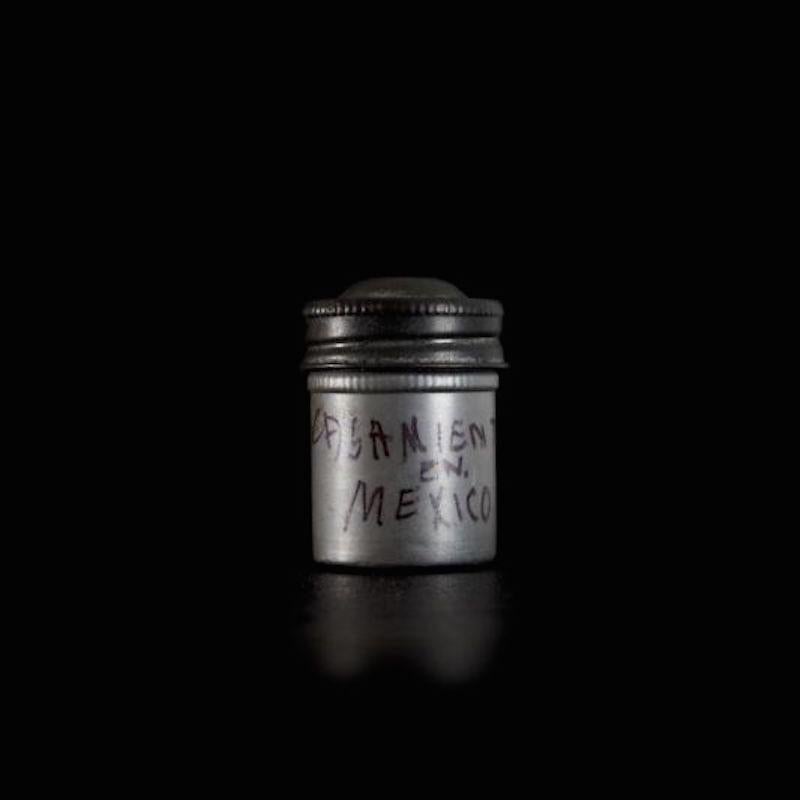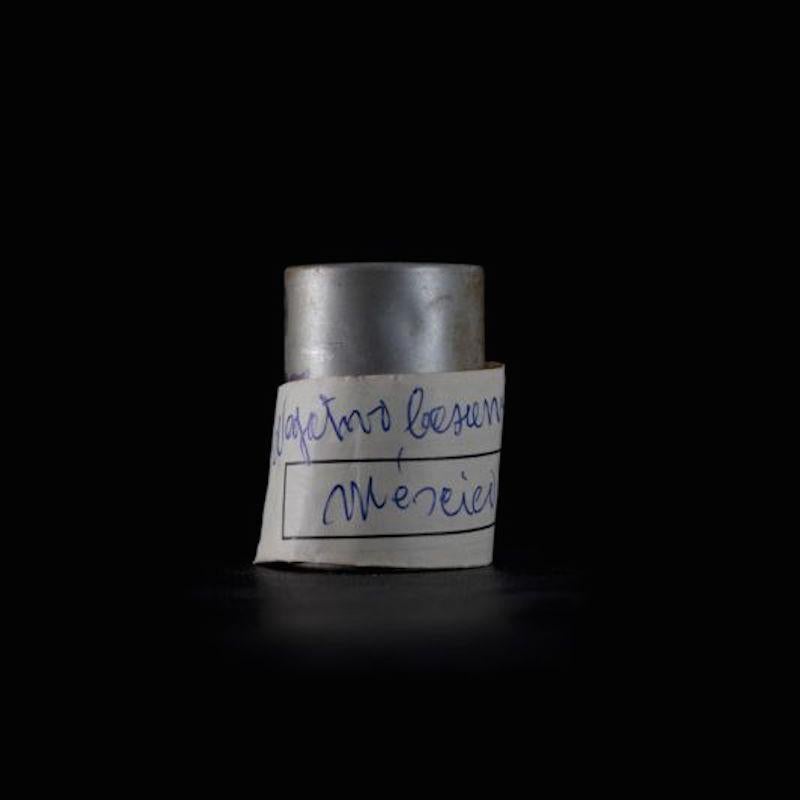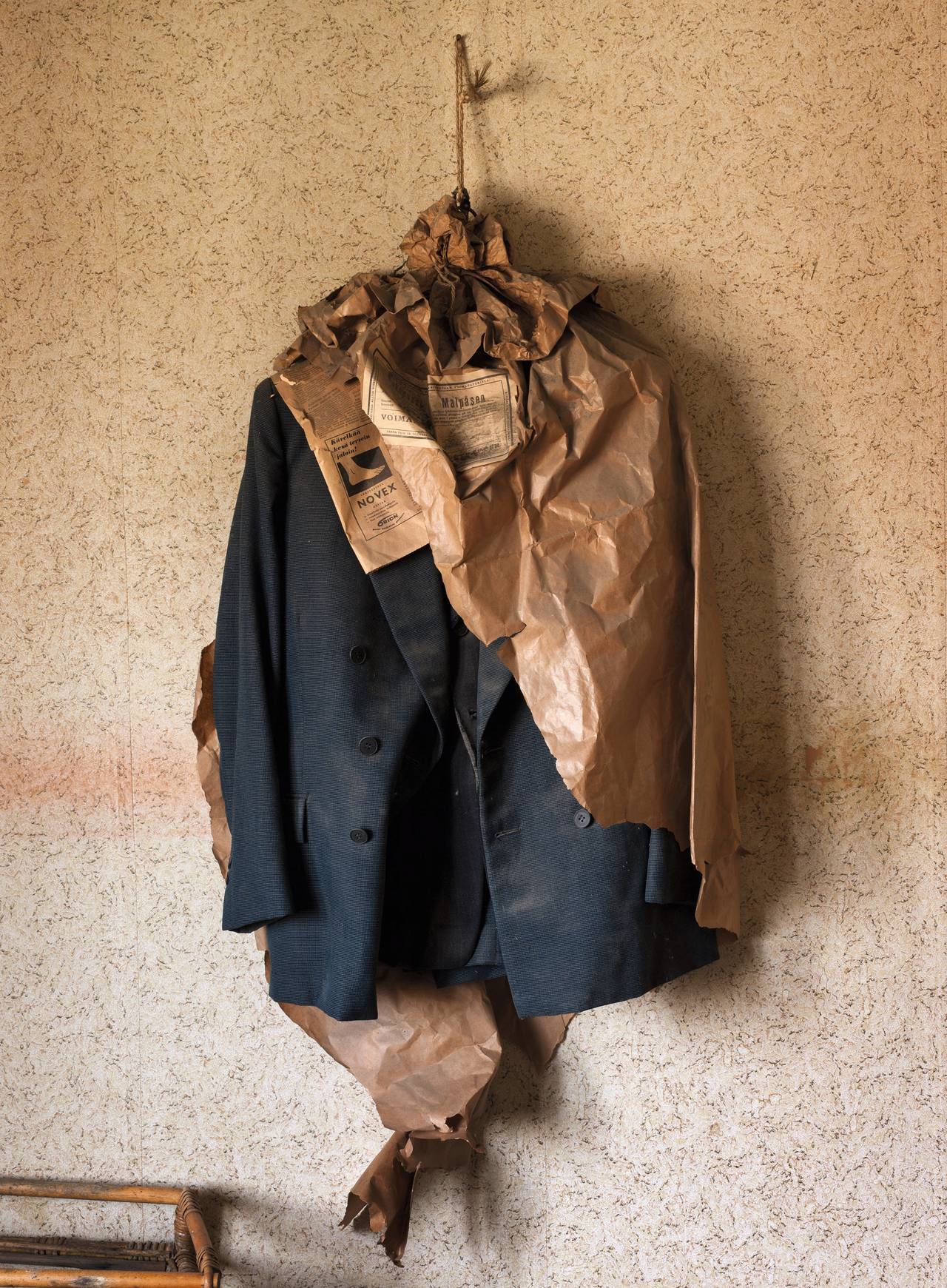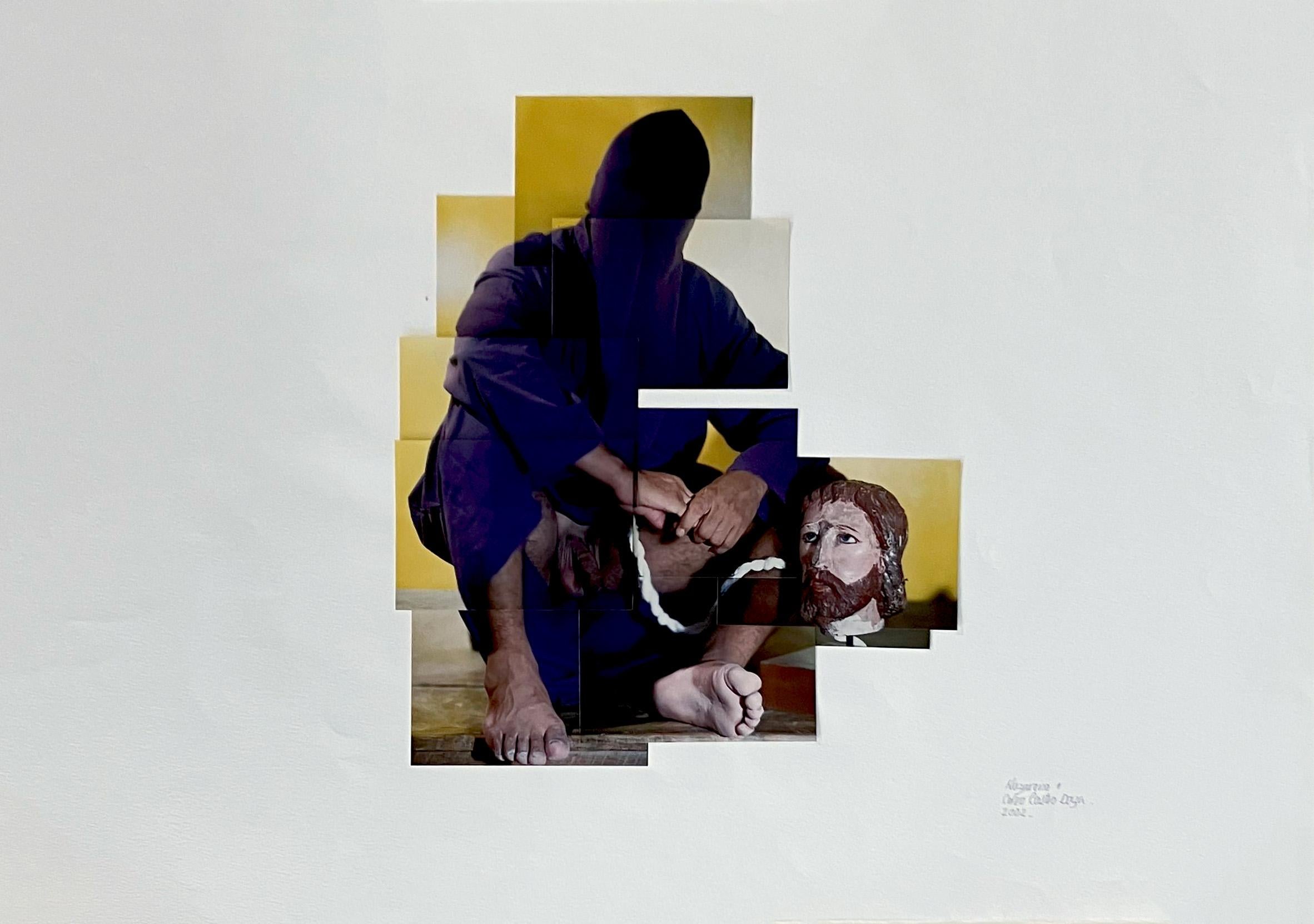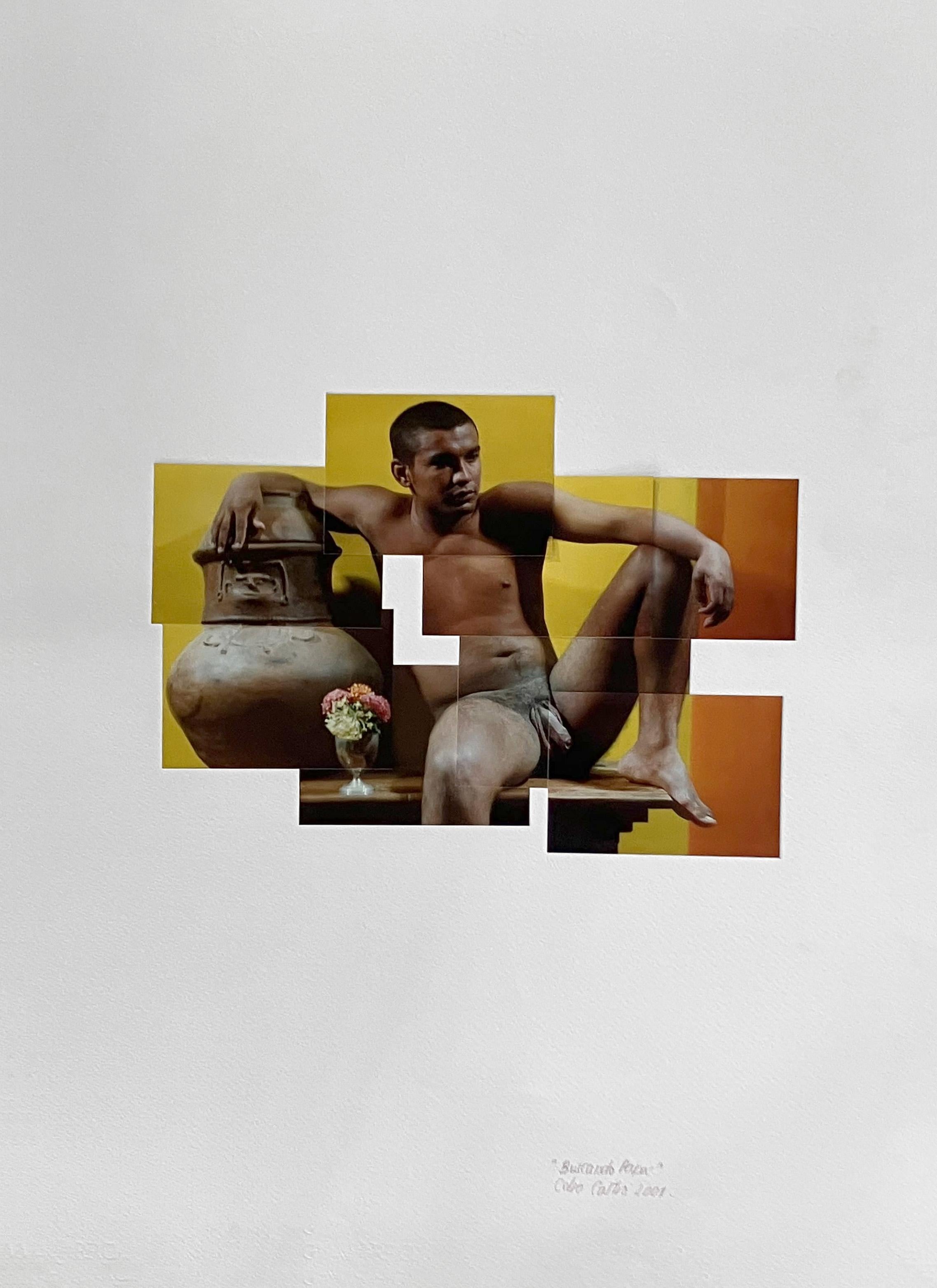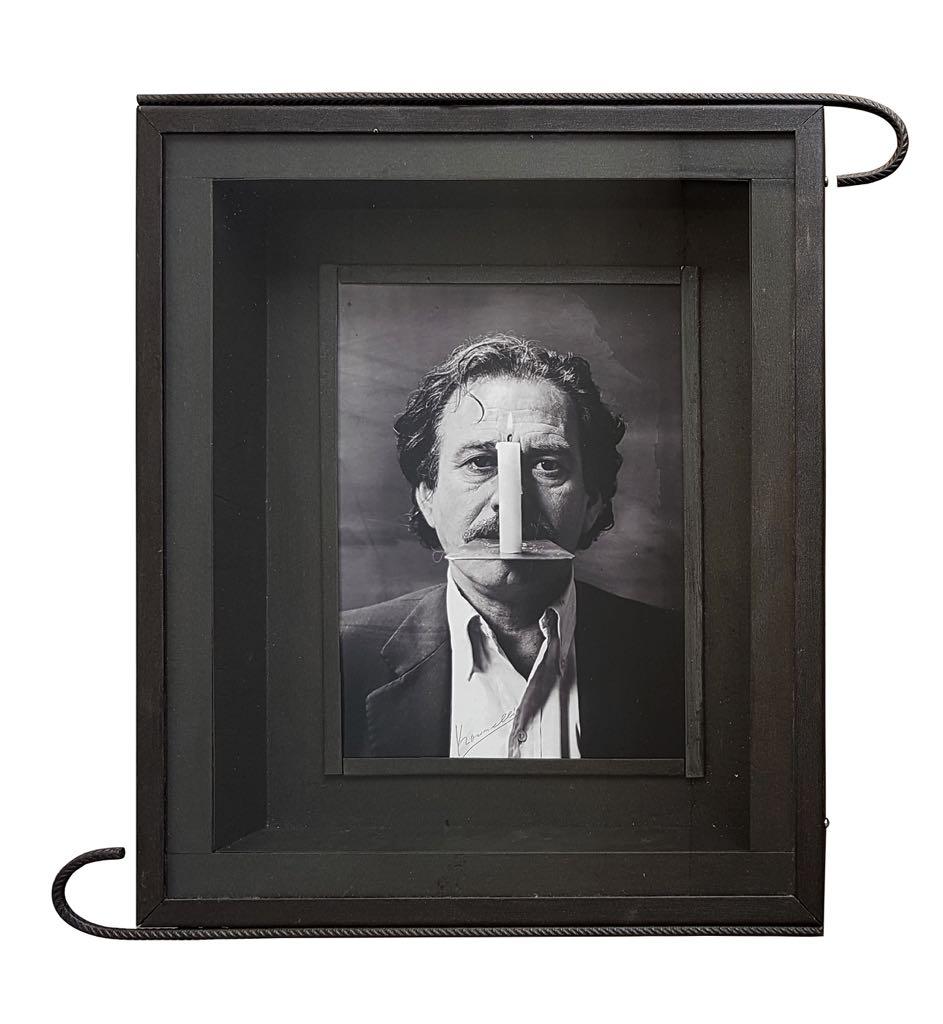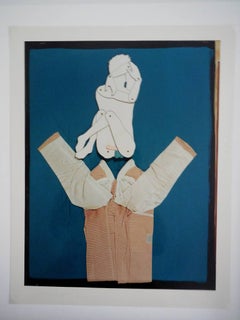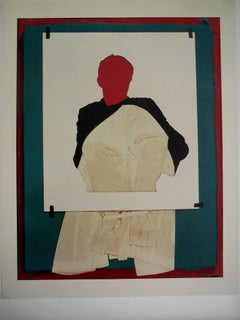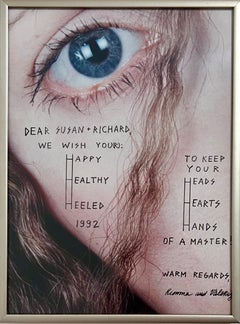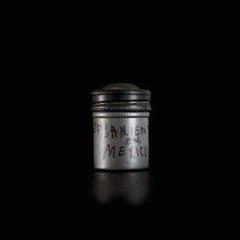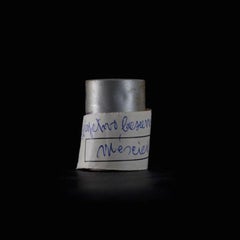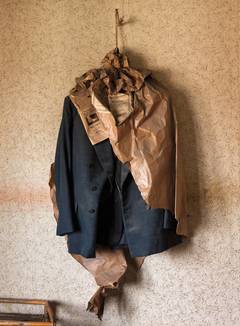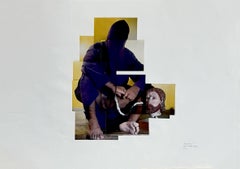Items Similar to El Caso
Want more images or videos?
Request additional images or videos from the seller
1 of 9
Christian BoltanskiEl Caso1989
1989
$850
£639.40
€740.72
CA$1,198.32
A$1,332.62
CHF 699.45
MX$16,250.61
NOK 8,839.60
SEK 8,287.48
DKK 5,528.64
About the Item
Christian Boltanski, El Caso, Parkett., Zürich. 1989 in the collection of the MOMA Museum of Modern Art NYC
Miniature booklet with 17 photographs,
2 x 3 1/8” (5 x 8 x 0,6 cm)
ring bound with perspex covers and printed title
Ed. 80/XX, signed and numbered (this one is not signed or numbered and might be an artist proof)
Guilty, Not Guilty. Themes central to Boltanski’s oeuvre find devastating expression in this tiny piece of pocket pornography containing images of brutal murder re-photographed by the artist from the Spanish detective magazine El Caso. [Ref. Bob Calle - Christian Boltanski Artist's Books 1969-2007, p.60].
Artists' book featuring 17 b/w photographs held together with two metal rings: "Luxury edition of a booklet with real glossy photographs, small enough to be hidden behind the hand... It pictures the bodies of victims of violent crime. By showing these photographs of half-naked corpses, bought nearer by close-up shots, the artist transforms the viewer into a voyeur who virtually becomes a sadistic partner in the crime." -- from Catalogue: Books, Printed Matter, Ephemera 1966-1991.
references
"Livres" by Christian Boltanski. Paris / Köln / Frankfurt, France / Germany : AFAA / Jennifer Flay / Walther König / Portikus, 1991.
No. 69 in "Christian Boltanski : Catalogue: Books, Printed Matter, Ephemera, 1966-1991" by Christian Boltanski, Jennifer Flay, Günter Metken. Köln / Frankfurt, Germany : Verlag der Buchhandlung Walther König / Portikus, 1992, pp. 184 - 185.
"Christian Boltanski : Artist's Books 1969 - 2007" by Christian Boltanski, Bob Calle. Paris, France : Éditions 591, 2008, pp. 60.
Quote
“There is in the work of the artist something of the high priest and something of the charlatan. Boltanski transforms shards of nothing into art, bits of cardboard, lumps of sugar, old photos, but plays the game of showing us that his transformation is also mere illusion, that this art is also the nothing or next to nothing from which it has sprung.” Didier Semin Parkett No. 22, 1989
Christian Boltanski is a French photographer, sculptor and installation artist (although he refers to himself as a "painter", with regard to his concerns in all media). He is married to the artist Annette Messager, with whom he sometimes collaborates.
Christian Boltanski was born in occupied Paris in 1944 to a Jewish father and a Corsican mother and spent his early years hiding from the Nazis.Christian Boltanksi's artistic work is haunted by the problems of memory and loss and he often seeks to memorialize the anonymous and those who have disappeared.. He is known for a body of work that may be considered a disturbing archive of our social, cultural, ethnic, and personal histories. His death-obsessed creations have earned him an international reputation. He has spent his artistic life working with the most ephemeral of materials -- newspaper clippings, photographs, found snapshots, clothing, candles, light bulbs, old biscuit tins to examine and mark our transitory passing here on earth. Photographs are central to his work, and Boltanski explores the perceived truth of the photograph, how it is often used as a shield against death.
Self-taught, he began painting in 1958, but first came to public attention in the late 1960s with short avant-garde films and with the publication of notebooks in which he came to terms with his Jewish childhood. This focus on real and fictional evidence of his and other people's existence has remained central to his later art.
His works are included in collections of the Fine Arts Museums of San Francisco; the Kemper Museum of Contemporary Art, Missouri; the Mattress Factory, Pennsylvania; the Sintra Museu de Arte Moderna, Portugal; tate Museum, London England; Israel Museum, Jerusalem Israel.His work has been widely exhibited internationally, and he has had exhibitions at such museums as: ARC/ Musée d’art moderne de la ville de Paris, Paris; Centro Gallego de arte contemporanea, Santiago de Compostela; Kunsthalle Wien, Vienna; the Arken Museum for Moderne Kunst, Copenhagen; Museum of Contemporary Art, Helsinki; Villa Medici, Rome; Konsthalle, Malmo; The National Museum of Contemporary Art, Oslo; the Museum Ludwig, Cologne; Musée de Grenoble; the Stedelijk van Abbemuseum, Eindhoven; the Whitechapel Art Gallery, London; the Ydessa Hendeles Foundation, Toronto, and the Museo Nacional Centro de Arte Reina Sofia, Madrid. He was a participant in Documenta in 1987 and in 1972, and the Venice Biennale in 1993 and 1986. His exhibitions in the United States have included Lessons of Darkness, which was presented at the Museum of Contemporary Art, Chicago, The Museum of Contemporary Art, Los Angeles, The New Museum, New York, the University Art Museum, Berkeley, as well as The Vancouver Art Gallery, Vancouver and The Power Plant, Toronto.He has exhibited at numerous other venues as well, including the Museum of Fine Arts, Boston; the Kemper Museum of Contemporary Art, Kansas City; the Public Art Fund, and the New York Public Library, New York; and the Contemporary Art Museum, Houston.
- Creator:Christian Boltanski (1944, French)
- Creation Year:1989
- Dimensions:Height: 1.97 in (5 cm)Width: 3.15 in (8 cm)Depth: 0.24 in (6 mm)
- Medium:
- Movement & Style:
- Period:
- Condition:minor wear to cover.
- Gallery Location:Surfside, FL
- Reference Number:1stDibs: LU38210636082
About the Seller
4.9
Platinum Seller
Premium sellers with a 4.7+ rating and 24-hour response times
Established in 1995
1stDibs seller since 2014
1,794 sales on 1stDibs
Typical response time: <1 hour
- ShippingRetrieving quote...Shipping from: Surfside, FL
- Return Policy
Authenticity Guarantee
In the unlikely event there’s an issue with an item’s authenticity, contact us within 1 year for a full refund. DetailsMoney-Back Guarantee
If your item is not as described, is damaged in transit, or does not arrive, contact us within 7 days for a full refund. Details24-Hour Cancellation
You have a 24-hour grace period in which to reconsider your purchase, with no questions asked.Vetted Professional Sellers
Our world-class sellers must adhere to strict standards for service and quality, maintaining the integrity of our listings.Price-Match Guarantee
If you find that a seller listed the same item for a lower price elsewhere, we’ll match it.Trusted Global Delivery
Our best-in-class carrier network provides specialized shipping options worldwide, including custom delivery.More From This Seller
View AllLarge Harry Bowers Vintage C Print Photograph From Ten Photographs Fashion Photo
By Harry Bowers
Located in Surfside, FL
HARRY BOWERS
T E N P H O T O G R A P H S
I DON'T LOOK FOR PHOTOGRAPHS I INVENT THEM
I recall my first meeting with Harry Bowers in California a few years ago. As he produced his large-scale prints, I was at first flabbergasted, not only by their size, but by their seamless perfection. Technique appeared to be everything but then technique as technique simply vanished. After the first moment, technique was no longer an issue, but rather a passageway to the imagery.
Suffice it to say about Harry Bowers' working style that he is an obsessive man. Trained as an engineer, he has turned that discipline to art. His lenses, equipment and darkroom, much of it exactingly manufactured by himself to answer certain needs, serve the desire of the artist to take photographic technique to its ultimate perfection in invisibility and transparency. I respect obsession in art, and particularly in photography, because obsession in photography passes beyond the easy, middle ground of image making to a more demanding, more difficult, yet more rewarding end. Bowers' obsession is to eliminate "photography as technique." No grain, no decisive moments, no journalism, or, seemingly, direct autobiographical endeavors appear in his work.
Bowers is an artist of synthesis who controls his environment if only in the studio exactly to his liking. The images he creates are formal structures, saucy stories on occasion, which may offer hints of a darker, more frightening sexuality, but what you see is the end product of an experiment in which nothing save the original insight perhaps is left to chance.
We seem fascinated with the idea of replication of reality in art. Popular painting frequently reproduces a scene "with the accuracy of a photograph," and photographs may "make you feel as though you were right there." The very invisibility of the photographic medium is important to Bowers, in that it allows him to maneuver his subject matter without concern for rendering it in an obvious art medium which would interfere with the nature of the materials he uses. The formal subtleties of Bowers' recent work are as delicious and ambiguous in their interrelationships as the best Cubist collages, yet while those collages always suggest their parts through edge and texture, these photographs present a structure through a surface purity.
Bowers' earlier works, for example, the Skirts I Have Known series, were formed of bits of clothing belonging to Bowers and his wife or found at local thrift shops. These works fused an elegance of pattern and texture, reminiscent of Miriam Shapiro...
Category
1980s Arte Povera Photography
Materials
Photographic Paper, C Print
Lacre à S
By Marc Andre Cossette
Located in Surfside, FL
After completing an MA in Political Studies at Queen’s University, focusing on identity politics and immigration, Cossette served in several public policy roles with the federal gove...
Category
20th Century Figurative Photography
Materials
Photographic Paper
Large Harry Bowers Vintage C Print Photograph From Ten Photographs Fashion Photo
By Harry Bowers
Located in Surfside, FL
HARRY BOWERS
T E N P H O T O G R A P H S
I DON'T LOOK FOR PHOTOGRAPHS I INVENT THEM
I recall my first meeting with Harry Bowers in California a few years ago. As he produc...
Category
1980s Arte Povera Photography
Materials
Photographic Paper, C Print
Russian Samizdat Art Pioneers Conceptual Photo Photograph Gerlovin & Gerlovina
Located in Surfside, FL
Greetings, 1992
Photograph 10.25 h × 7.5 w in (26 × 19 cm), Frame 11 x 8 inches
Photo mounted to foamcore and framed behind acrylic
Hand signed and dated 'Rimma and Valeriy 1992';
Rimma Gerlovina and Valeriy Gerlovin were founding members of the underground conceptual movement Samizdat in the Soviet Union, described in their book Russian Samizdat Art. Based on a play of paradoxes, their work is rich with philosophic and mythological implications, reflected in their writing as well. Their book Concepts was published in Russia in 2012. The work by Rimma Gerlovina and Valeriy Gerlovin is emphatically contemporary. The artist couple were part of the Moscow Conceptualists, their performance Costumes, from 1977, deepened their ongoing work with linguistic semiotic systems and their own bodies. Considering the context in which Gerlovina and Gerlovin made their work—that of political restrictions on public life, of unfreedom, and censorship—their collaborative togetherness must also be read as a space of possibility for political community and resistance. Rimma Gerlovina’s hair is featured prominently in the art of the Gerlovins as a constructing element of the body. Used for the linear drawings her braids transmit transpersonal waves reminiscent of an aura of live filaments. Long loose hairs function as threads of life; streaming in abundance, they allude to Aphrodisiac vitality and Samsonian strength. On the other hand, they are the haircloth worn during mourning and penitence. In New York they continued to make sculptural objects, and their photographic projects grew into an extended series called Photoglyphs. In their photographs, they use their own faces to explore the nature of thought and what lies beyond it. Since coming to the United States in 1980, they had many exhibitions in galleries and museums including the Art Institute of Chicago. The New Orleans Museum of Art launched a retrospective of their photography, which traveled to fifteen cities. Group exhibitions include the Venice Biennale, the Guggenheim Museum, New York, Smithsonian National Museum of American Art, Washington D.C., Bonn Kunsthalle, Germany, Tokyo Metropolitan Museum of Photography, State Tretyakov Gallery, Moscow, and others.
Samizdat or “self-published” began in the Soviet Union, and Samizdat art consists mainly of books and magazines published and distributed by the artists who made them. Samizdat art has sources in the innovative books and magazines turned out by the early 20th century Russian avant-garde—artists and writers like Olga Rozanova, Vladimir Mayakovsky, El Lissitzky, and Alexander Rodchenko.
Artists as varied as Alexander Archipenko, Leon Bakst, Marc Chagall, Naum Gabo, Alexandra Exter...
Category
1990s Figurative Photography
Materials
Photographic Paper
Marriage a Vacillating State of the Libido, Mixed Media
By Lisa Kokin
Located in Surfside, FL
LISA KOKIN
Mineola, New York, b. 1954
Lisa Kokin creates her art with recycled and reclaimed materials she has found at flea markets, thrift stores, and recycling centers. In the pas...
Category
21st Century and Contemporary Contemporary Mixed Media
Materials
Mixed Media
Israeli Mixed Media Painting, Tumarkin Abstract Surrealist Photo Collage
Located in Surfside, FL
Abstract Surrealist Photo collage with painting. Mixed Media with or about Amos Keinan the Israeli Playwright and journalist. Yigal Tumarkin (also Igael Tumarkin) (born 1933) is an Israeli painter and sculptor.
Biography
Peter Martin Gregor Heinrich Hellberg (later Yigal Tumarkin) was born in Dresden, Germany. His father, Martin Hellberg, was a German theater actor and director. His mother, Berta Gurevitch and his stepfather, Herzl Tumarkin, immigrated to Mandate Palestine when he was two. Tumarkin served in the Israeli Navy. After completing his military service, he studied sculpture in Ein Hod, a village of artists near Mount Carmel.
Art career
Igael Tumarkin, 1980
Among Tumarkin's best known works are the Holocaust memorial in Rabin Square, Tel Aviv and his sculptures commemorating fallen soldiers in the Negev.
Tumarkin is also a theoretician and stage designer. In the 1950s, Tumarkin worked in East Berlin, Amsterdam, and Paris. Upon his return to Israel in 1961, he became a driving force behind the break from the charismatic monopoly of lyric abstraction there. Tumarkin created assemblages of found objects, generally with violent Expressionist undertones and decidedly unlyrical color. Hebrew. His determination to "be different" influenced his younger Israeli colleagues. The furor generated around Tumarkin's works, such as the old pair of trousers stuck to one of his pictures, intensified the mystique surrounding him.Tumarkin has worked extensively in the medium of printmaking, producing over three hundred prints. He was encouraged by the print studios founded during those years in the USA, where prominent artists such as Jasper Jones...
Category
1960s Surrealist Mixed Media
Materials
Mixed Media, Silver Gelatin
You May Also Like
Historia, Memoria y Silencios (Silencios) Unopened IX
By Lorena Guillén Vaschetti
Located in New York, NY
Historia, Memoria y Silencios (Silencios) Unopened IX, 2009
Archival Ink on Cotton Paper
16h x 16w in
Edition of 5
Lorena Guillén Vaschetti was born in Rosario, Argentina in 1974 a...
Category
Early 2000s Contemporary Photography
Materials
Cotton, Paper, Archival Ink
Historia, Memoria y Silencios (Silencios) Unopened X
By Lorena Guillén Vaschetti
Located in New York, NY
Historia, Memoria y Silencios (Silencios) Unopened X, 2009
Archival Ink on Cotton Paper
16h x 16w in
1/5
Lorena Guillén Vaschetti was born in Rosario, Argentina in 1974 and current...
Category
Early 2000s Contemporary Photography
Materials
Cotton, Paper, Archival Ink
Untitled (From "Organized Freedom, Final Edition" series)
By Esko Männikkö
Located in New York, NY
Esko Mannikko
Category
21st Century and Contemporary Photography
Materials
C Print
Price Upon Request
Nazareno #1. From The series Buscando Papá. Photomontage
By Celso José Castro Daza
Located in Miami Beach, FL
Nazareno #1, 2002 by Celso José Castro Daza
From The series Buscando Papá.
One of a kind Photomontage on archival paper
Unframed
The root of these unique photographic works by the a...
Category
Early 2000s Contemporary Color Photography
Materials
Photographic Paper, Archival Paper
Untitled 2. From Searching a Father Series. Photomontage
By Celso José Castro Daza
Located in Miami Beach, FL
Castro’s labor-intensive, photo-collage works of drug kingpins, smugglers, hitmen, countrymen, street vendors, soldiers, paramilitaries, kidnappers, and pimps pose showing with pride...
Category
Early 2000s Contemporary Color Photography
Materials
Photographic Paper, Archival Paper, Color
Untitled
Located in Roma, IT
Original black and white photograph of the 1989 with the portrait of the famous artist. Signed by Jannis Kounellis. Photograph by Claudio Abate. Include ...
Category
1980s Contemporary Black and White Photography
Materials
Photographic Paper
$21,490
